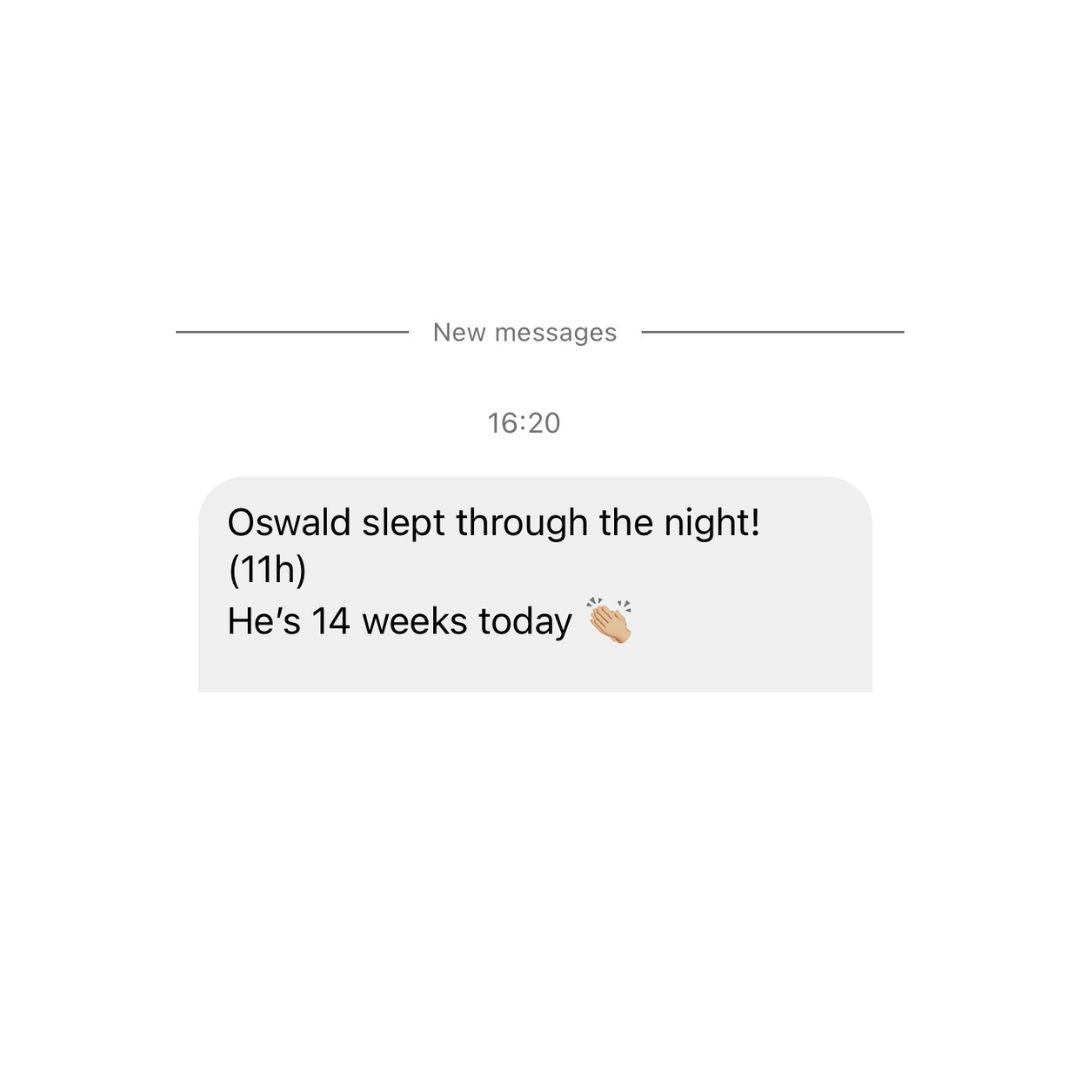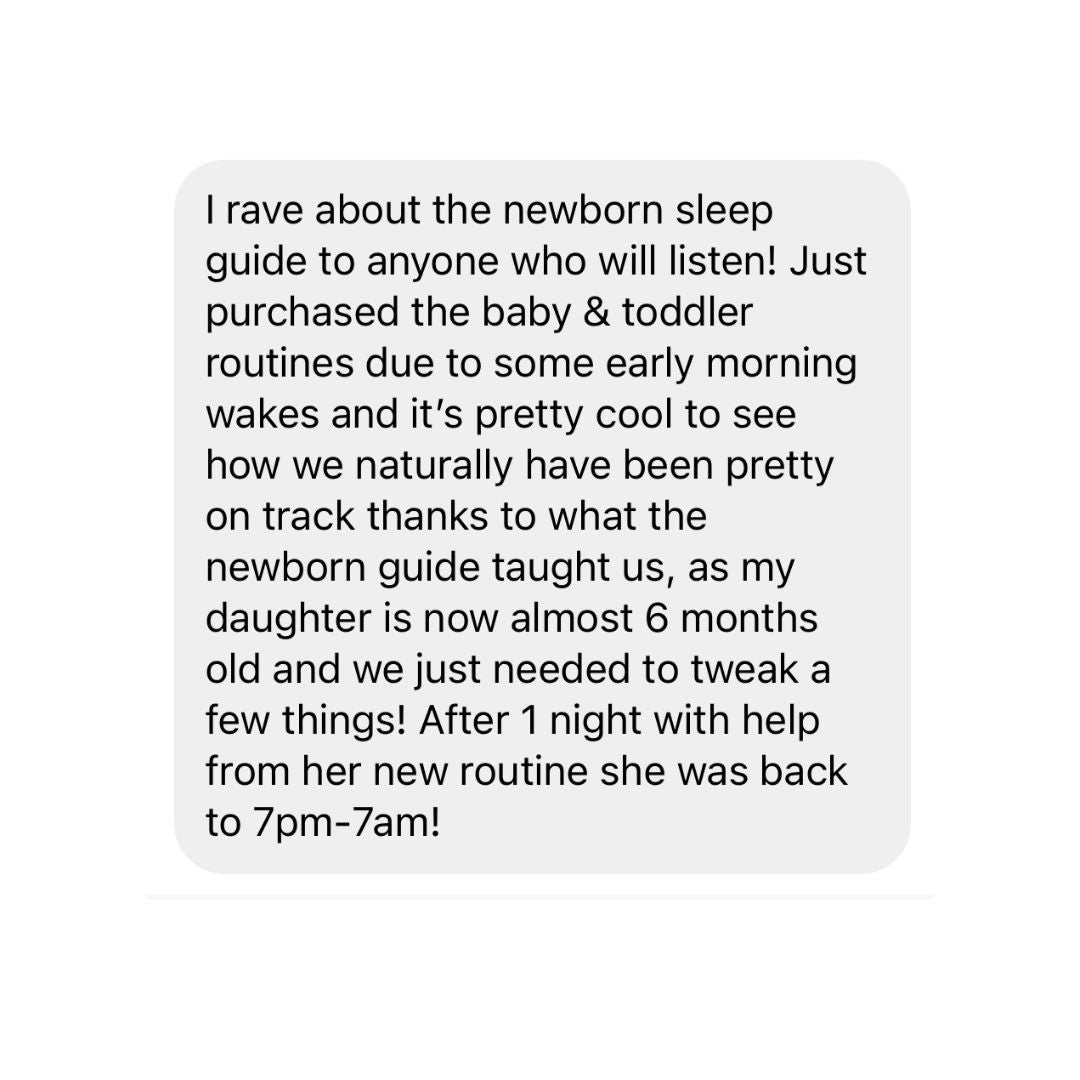Does your baby nap soundly in your arms but wake the second you try to put them down in their bassinet or crib?
We love a good cuddle nap. And contact naps are such a lovely part of the early days. But when your arms need a break (or you're ready for a little more flexibility), it is absolutely possible to make the transition gently — without endless tears or strict rules.
Let’s walk through how to start.
Why does my baby hate their crib?
Your baby isn’t trying to make things difficult. And despite how it might feel, they don’t actually “hate” their crib. Young babies don’t yet have the emotional capacity to hate anything. What’s really happening is that they’re acting on pure instinct — it’s not because they dislike the crib, it’s just unfamiliar.
If they’re used to always sleeping in your arms, being placed into a stationary, cold space can feel completely foreign. They don’t yet understand that the crib is a place for sleep. In their mind, it’s more like: “Wait, I’m tired... why am I here instead of on you? I want to sleep!”
That’s why the goal isn’t to force a change overnight, but to gently help them learn that their bassinet or crib is a safe, familiar place to fall asleep.
Why timing is everything for better and longer crib naps
Before babies can start to settle and fall asleep easily in their own sleep space, they need to be genuinely ready for sleep. That tiredness builds through something called sleep pressure, which is driven by a chemical build up in the brain called adenosine.
Put them down too soon and they may resist or wake shortly after, simply because their body wasn't actually ready for sleep to happen. On the flip side though, wait too long and you hit overtired territory and their emotional regulation goes out the window and falling asleep independently can seem almost impossible.
This is why age-appropriate wake windows matter so much. Hint, if your baby is over a few weeks old and you're still following 45 - 60 minute wake windows, it's time to lengthen them. Our Newborn Sleep Guide and Baby & Toddler Routines include detailed nap and feeding routines to help you find that sweet spot so your baby is primed for sleep when it’s time to go down.
“We had no structure to our days and my baby would only sleep in my arms. After following the routines in the guide, she now naps in her crib and we have longer stretches at night. It’s been so helpful.”
— Sana, Newborn Sleep Guide user
Make the crib feel like a sleepy, safe space
If your baby doesn’t yet associate the bassinet or crib with sleep, that’s okay, It just means we need to help them build that connection. A few simple tweaks to the sleep environment can make a great start:
Keep it dark. Daylight streaming in the room can make it harder to settle to sleep (just like it is for most adults). Darkness also helps cue the brain that it’s time to rest.
Use white noise. The consistent sound mimics the womb and helps drown out household noise. Using it before you even start crib naps helps create a strong sleep association.
Make it smell like you. Sleep with the bassinet or crib sheets or swaddle before using it. Your scent is comforting and familiar to them.
Keep them warm (but not hot). Your body is warm, the crib isn’t. Choose sleepwear and swaddles or sleeping bags suited to the room temperature.
Swaddle snugly (if under 12 weeks and not rolling yet). This helps avoid wake-ups caused by the startle reflex.
Start small and stay consistent
If your baby has been contact napping for every sleep, you don’t need to overhaul everything at once. Start with just one nap a day, usually the first one, when sleep comes easiest.
If you’re following our routines, you’ll already know the timing they’re most primed for sleep, so when it's time to get them down, try settling your baby in the crib instead of in your arms. Place a hand gently on their chest and use rhythmic patting or side-to-side rocking to soothe them. If they’re calm but not yet asleep, give them the chance to fall asleep there on their own without any of that and just sit by them, offering an occasional shhhh to remind them that it's sleep time and you're still nearby.
If they do get upset, use one of the responsive settling methods from our Baby Sleep Programs to guide you.
“By the second day, my little one was settling in his crib for naps — something that was impossible before. Baby Sleep Code provided a gentle method I felt comfortable with, and my baby took to it really well.”
— Isamar, Baby Sleep Program user
Even if they only sleep for a short time at first, it’s still a win. The goal is to help them start associating their crib with falling asleep and the more often that happens, the easier it becomes. As your baby gets used to falling asleep in their sleep space, staying asleep there gets easier too.
Will my baby just grow out of contact naps themselves?
Maybe! But in our experience, most babies won’t magically decide one day that they’d rather nap solo. At some point, you’ll usually need to guide that change. And the longer contact naps remain the only way they fall asleep, the stronger that association becomes, which can make the shift to crib naps more challenging for them.
That’s why it helps to start gently shifting how and where you settle them to sleep. The goal is to help their crib feel familiar, predictable, and safe — just like your arms have always felt.
Take the next step with support that actually works
Whether you're navigating newborn sleep or dealing with a 6 month baby who only sleeps on you, our sleep guides offer a clear, flexible way forward without the overwhelm.
The Newborn Sleep Guide is your week-by-week roadmap for the first 3.5 months, covering nap routines, gentle settling, and more.
The Baby Sleep Program gives you a step-by-step plan to help your baby sleep 7–7 and take great naps — even if they’ve always contact napped before this.
Join thousands of families who’ve transformed their baby’s sleep with our proven, supportive approach.




















